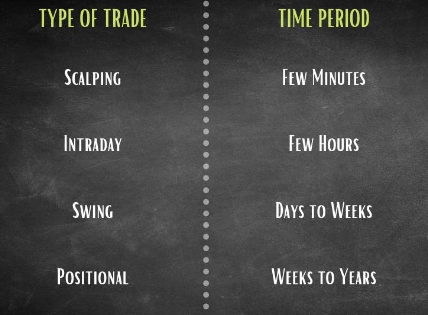Support and Resistance Trading in Stock Market | Price Action Trading
What Is Support and Resistance?
In price action trading on the stock market, support and resistance trading is a common technique. It entails locating critical price chart levels where the price has a history of either reversing (bounces) or breaking through. Based on the idea that history frequently repeats itself and that these levels may serve as prospective entry or departure points, traders use these levels to help them make trading decisions.
These are the link of some Indian Demat account, you can sign in through 🠇
1. Select a Timeframe:-
2. Observe Swing Highs and Lows:
Draw trendlines connecting the swing highs and lows. A potential support level may be indicated by an ascending trendline connecting swing lows, whilst a potential resistance level may be indicated by a descending trendline connecting swing highs.
- Swing Highs: These are price chart peaks where the price has ceased to rise and has begun to fall. Future levels of resistance may be reached at these places.
- Swing Lows: On a price chart, these are valleys where the price has stopped falling and begun to rise. Future levels of support may be based on these points.
3. Draw Trendlines:
4. Horizontal Levels:
5. Round Numbers and Psychological Levels:
6. Historical Price Reactions:
8. Moveable averages:
9. Volume Analysis:
Higher trading activity might be a sign of strong support or resistance at a given price level. Keep an eye out for volume increases near certain points.
10. Market News and Events:
Support or resistance levels may occur as traders respond to breaking news, earnings reports, or economic data releases.
11. Multiple Timeframe Analysis:
To have a more complete understanding of the market, compare support and resistance levels throughout a range of timeframes.
1. Select a Relevant Chart:
Based on your trading or investment approach, pick the ideal timeline for your study. Daily, weekly, and intraday charts are examples of common timeframes.
2. Identify Swing Highs and Lows:
On the price chart, find the important swing highs and swing lows. While a swing low is a valley where the price was decreasing and then halted, a swing high is a peak where the price was increasing and then stopped.
3. Draw Horizontal Lines for Key Levels:
- For support:Connect numerous swing lows that are reasonably near to one another by drawing a horizontal line. A possible support level is represented by this line.
- For resistance:Connect many swing highs that are quite near to one another by drawing a horizontal line. This line illustrates a possible amount of resistance.
4. Use Trendlines:
You can connect swing highs or lows that form an ascending or descending pattern using trendlines in addition to horizontal lines. These trendlines can serve as moving points of support or resistance.
5. Confirm with Multiple Touches:
A support or resistance level gains strength the more times it is touched or respected by the price. To confirm a level, look for at least two touches.
6. Consider Psychological Levels and Round Numbers:
Due to their psychological effects on traders, round numbers and psychological levels (such as 50 and 100) frequently serve as support and resistance levels.
7. Account for Gaps:
Pay attention to any gaps in the price chart as they may serve as possible locations of support or resistance.
8. Use Candlestick Patterns:
To further corroborate prospective reversals, examine candlestick patterns near support and resistance levels.
9. Adjust for Timeframes:
Various periods can disclose various amounts of support and resistance. For a thorough analysis, think about looking at charts for many timeframes.
10. Practice and Refinement:
Practice and refinement are necessary for accurately drawing support and resistance lines. You'll get better at spotting significant levels on the chart with practice.
11. Update as Needed:
Markets are dynamic, and support and resistance levels can shift. Review and modify your support and resistance lines frequently based on fresh data and market movements.
III. Trading Strategies:
- Bounce (Reversal) Strategy: Before entering a buy position as the price approaches a support level, traders may watch for indications of a reversal (the price rebounding back up). In contrast, traders might watch for indications of a reversal (price bouncing down) as the price approaches a resistance level before entering a sell trade.
- Breakout Strategy: Traders may also believe that the price will move significantly if it successfully overcomes a resistance level or breaks through a support level. In anticipation of a breakthrough, they might put buy orders above the resistance level or sell orders below the support level.
In order to make wise selections and try to profit from price movements, traders in the stock market employ a variety of trading methods. Each method and risk profile for a strategy is different.
1. Day Trading:
Day trading is the practice of buying and selling assets during the same trading day in an effort to capitalize on swift price changes. To eliminate overnight risk, they routinely sell out all of their bets before the market closes.
2. Swing trading:
Swing traders try to profit from short- to medium-term market patterns by maintaining positions for several days to weeks. To find probable entry and exit positions, they frequently use technical analysis.
3. Trend Following:
Traders that follow trends buy when the market is rising and sell (or go short) when the market is falling. To find trends, they employ technical tools like moving averages.
4. Contrarian Trading:
Trading on the opposite side of market sentiment is known as contrarian trading. Based on the conviction that market mood can cause overreactions, they buy when others are selling and sell when others are buying.
5. Scalping:
To capitalize on extremely brief price changes, scalpers place quick trades within seconds or minutes. This method emphasizes more frequent trading and quick execution.
6. Arbitrage:
7. Pairs Trading:
Pairs trading involves taking both long and short positions on two connected assets at the same time. Profiting from the relative price changes between the two assets is the aim.
8. Momentum Trading:
Momentum trading involves buying assets with high upward price momentum and selling them when there is weak momentum. This plan is predicated on the idea that price trends will remain the same.
9. Algorithmic (Algo) Trading:
Algorithmic traders make transactions based on predetermined criteria using computer programs and algorithms. Arbitrage, market-making, and trend-following are just a few of the tactics that can be applied to algorithmic trading.
Traders employ confirmation signals, which are extra indicators or patterns, to verify their trading choices based on a specific strategy. These signals give traders further proof that the anticipated price change is likely to materialize, which boosts their confidence in a transaction. Confirmation signals can assist in weeding out spurious signals and lowering the danger of opening trades too soon.
Some candlestick patterns might predict upcoming price continuations or reversals. Doji patterns, enveloping patterns, and hammer patterns are a few examples. These patterns can reveal information about the mood of the market and probable price movements.
2. Technical Indicators:
Based on past price information, technical indicators are mathematical computations. These indicators are frequently used by traders to validate their trading choices. Examples comprise:
Moving averages:
- Verify trends and locate possible points of entry or exit.
- Relative Strength Index (RSI): Determines if an asset is overbought or oversold.
- The Moving Average Convergence Divergence (MACD) indicator detects variations in momentum.
- Potential trend reversals are indicated by the stochastic oscillator.
3. Analysis of Volume:
Confirming price changes with volume might shed light on a trend's strength or probable reversal. During a breakout or reversal, a rise in volume may indicate active market participation.
4. Support and Resistance Levels:
After a price touches a support or resistance level, a move in the anticipated direction might validate the validity of the level.
5. Chart patterns:
When verified by a breakout or collapse, chart patterns like triangles, flags, pennants, and head and shoulders patterns can predict prospective price movements.
6. Divergence:
When an asset's price moves in the opposite direction of a technical indicator, there is a divergence. Divergence, whether bullish or bearish, might indicate probable reversals.
7. Fundamental Analysis:
Fundamental variables, including news occurrences, economic data releases, and financial reports, can validate or refute technical signals. Positive earnings, for instance, can support a bullish technical trend.
8. Timeframes Alignment:
Confirming a trade signal over several periods might offer more convincing proof of a possible price movement.
9. Pattern Retests:
Following a breakout or breakdown, a retest of the broken support or resistance level can be used to confirm the validity of the breakout.
10. Multiple Indicator Confluence:
The probability of a successful transaction is increased when several indicators or signals concur to confirm a trade.
11. Risk Management:
Risk management is essential for any trading strategy. Establish stop-loss orders to reduce possible losses in the event that the price does not behave as anticipated.
Trading and investing require careful risk management in order to reduce potential losses and safeguard your money. Effective risk management techniques aid traders and investors in navigating the financial markets' volatility and long-term money preservation.
12. Diversification:
Spreading risk can be accomplished by diversifying your portfolio by making investments in a range of assets or asset classes. Different investments may respond to market conditions differently, minimizing the impact of a single loss on your portfolio as a whole.
14. Stop-Loss Orders:
17. Use of Leverage:
Stay updated on market news, Economic Developments, and Anything Else That Could Affect Your Investments. You may make timely modifications to your portfolio by being informed.
Emotional control is essential. Avoid making snap judgments motivated by greed or fear. Respect your trading approach and plan despite brief market swings.
Use stop-loss orders to make trades automatically close if the price hits a certain threshold. This assists in limiting potential losses and keeps emotions from influencing rash judgments.
15. Risk-Reward Ratio:
Before making a deal, consider the potential profit in comparison to the potential risk. The risk-reward ratio should be at least 1:2, which means that the possible profit should be at least twice as great as the potential loss.
16. Position Restriction:
Refrain from investing an excessive amount of your capital in a single trade or investment. Establish position limitations to make sure that no trade can seriously harm your portfolio.
Use leverage sparingly if you must. Be mindful of the possibility of quick capital depletion because leverage magnifies both gains and losses.
18. Stay Informed:
19. Emotional Discipline:
20. Regular Reviews:
Some trading platforms have risk management tools, including guaranteed stop-loss orders or trailing stops, that can help you better safeguard your positions.
21. Risk Management Tools:
22. Backtesting:
Test your trading strategies using historical data to understand how they would have performed in different market conditions. This can shed light on potential dangers and benefits.
To succeed as a trader or investor, you must put in the necessary time and effort. You can hone your abilities, gain a deeper comprehension of the financial markets, and enhance your overall trading performance by gaining practical experience and learning from your actions and decisions in the market.
1. Skill Development:
Trading and investing are skills that may be developed through practice, just like any other talent. You can improve your analytical thinking, decision-making, and emotional control with regular practice.
2. Learning from Mistakes:
Mistakes and losses are valuable learning opportunities. By analyzing your past trades and investments, you can identify what went wrong and make adjustments to your strategy and approach.
3. Adaptation to Changing Markets:
Financial markets are dynamic and constantly evolving. With experience, you'll become better at adapting to different market conditions and identifying opportunities regardless of the prevailing trends.
4. Understanding Market Behavior:
Understanding market behavior, trends, and patterns that may not be obvious from theoretical studies alone is aided by real-world experience.
5. Developing Intuition:
Over time, you'll develop a "trading intuition" based on your experience. This intuitive sense can help guide your decisions and improve your ability to read market signals.
6. Emotional Control:
Practice helps you manage your emotions under real trading conditions. The more you expose yourself to the emotional rollercoaster of trading, the better you'll become at maintaining discipline and controlling impulsive actions.
7. Building Confidence:
As you gain experience and witness favorable outcomes from your trades and investments, your confidence in your talents will rise.
8. Fine-Tuning Strategies:
Practice allows you to fine-tune your trading strategies and techniques. You can test different approaches, indicators, and timeframes to find what works best for you.
9. Risk Management:
Experience teaches you the importance of effective risk management. You'll learn how to size positions appropriately, set stop-loss levels, and manage your overall portfolio risk.
10. Networking and Learning from Others:
Engaging with other traders and investors, whether through online communities, forums, or local groups, can expose you to different perspectives and insights that contribute to your growth.
11. Continuous Improvement:
Through practice and experience, you'll constantly seek ways to improve your performance. This drive for improvement can lead to better decision-making and more consistent results.
It's critical to remember that practice should be planned and directed. Keep thorough records of your transactions, including the reasoning behind each choice and the results. Review and evaluate your performance frequently to find areas that need improvement.
Although experience is priceless, keep in mind that there will always be some risk involved in trading and investing. Always approach the markets with caution and self-control, and over time, keep developing your knowledge and abilities.
In Brief, Though they can offer insightful information, support and resistance levels are not infallible indicators. Prices may surpass these thresholds, and the state of the market may abruptly change. To make wise trading decisions, traders frequently mix support and resistance research with other types of technical and fundamental analysis.
Always be ready for the possibility of unforeseen market movements, and think about using effective risk management strategies to safeguard your money.
With that, we wish you a very happy investing journey! Keep following and comment your feedback below.
Read more>>>
























0 Comments
If you have any doubt, please let me know